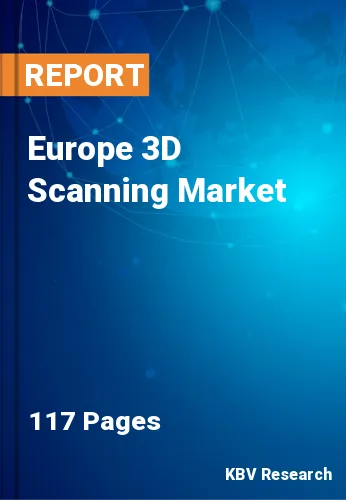The Europe 3D Scanning Market Size would witness market growth of 17.5% CAGR during the forecast period (2018 – 2024). 3D scanning is a process by using the triangulation method to determine the shape or volume of an object's surface in 3D space. This makes 3D measurement and 3D visualization possible by collecting information about the real-world object with a 3D scan device. Exact 3D measurements from a scanned object are helpful to inspect material and to monitor quality. If a 3D scanning technology is able to gather a lot of 3D data from the scanned object, then the digital 3D model of the real-world object is high resolution and accurate. This is understood as the 3D visualization technology. \
Increased adoption by major players in markets and end-user industries of 3D scanners and high expenditure on research and development are key factors driving demand for 3D scanners in Europe. Moreover, increasing attention will ultimately increase demand for the quality control and precision, and improvements in 3D modelling and mapping technology.
Based on Product, the market is segmented into Laser Scanner, Structured Light Scanner, and Optical Scanner. Based on Range, the market is segmented into Short Range, Medium Range, and Long Range. Based on End User, the market is segmented into Industrial Manufacturing, Healthcare, Aerospace & Defense, Architecture & Engineering, and Others. Based on countries, the market is segmented into Germany, UK, France, Russia, Spain, Italy, and Rest of Europe.
The market research report covers the analysis of key stake holders of the market. Key companies profiled in the report include FARO Technologies Inc., Creaform Inc., GOM GmbH, Konica Minolta Inc., 3d Digital Corporation, Autodesk Inc., 3D Systems Inc., Shapegrabber Incorporated, Maptek Pty Ltd., and Nikon Metrology NV.
Scope of the Study
Market Segmentation:
By Product
By Range
By End User
By Country
Companies Profiled
Our team of dedicated experts can provide you with attractive expansion opportunities for your business.

